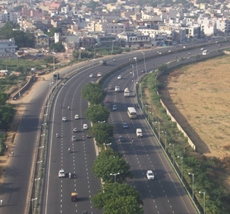US revives New Silk Road, Indo-Pacific Economic Corridor projects
25 May 2017
The United States has revived two major infrastructure projects in South and Southeast Asia in which India would be a vital player, a move that could potentially act as a counter to China's ambitious Belt and Road initiative.
 The Trump administration has resuscitated the 'New Silk Road' initiative, first announced in July 2011 by the then secretary of state Hillary Clinton, in a speech in Chennai, and the Indo-Pacific Economic Corridor linking South and Southeast Asia.
The Trump administration has resuscitated the 'New Silk Road' initiative, first announced in July 2011 by the then secretary of state Hillary Clinton, in a speech in Chennai, and the Indo-Pacific Economic Corridor linking South and Southeast Asia.
The NSR is a suite of joint investment projects and regional trade blocs that have the potential to bring economic growth and stability to Central Asia.
Announcing her vision for a New Silk Road, Clinton had said, "Turkmen gas fields could help meet both Pakistan's and India's growing energy needs and provide significant transit revenues for both Afghanistan and Pakistan. Tajik cotton could be turned into Indian linens. Furniture and fruit from Afghanistan could find its way to the markets of Astana or Mumbai and beyond."
But the NSR strategy, however, took a back seat during Obama's second term when John Kerry became secretary of state.
India will play a significant role in both the projects that will link Europe with Central Asia and Southeast Asia.
The Trump administration's maiden budget gives a brief outline of the two projects, which indicate that the 'New Silk Road' project would be a public- private initiative in which India would be an important player.
The state department said the budgetary request of its South and Central Asia will support the two initiatives - the New Silk Road (NSR) focused on Afghanistan and its neighbours, and the Indo-Pacific Economic Corridor linking South Asia with Southeast Asia.
Besides US funding, the projects will leverage collaborative projects in countries if the region, other bilateral donors, multilateral development banks, and the private sector.
It said "the importance of... The NSR grows" as the transition in Afghanistan continues and the US "strives to help the Afghan people succeed and stand on their own."
The state department plans ''far-reaching'' public diplomacy programmes to support the objectives.
It may be noted that India had boycotted the Belt and Road Forum (BRF) held in Beijing from 14-15 May due to its sovereignty concerns over the $50 billion China-Pakistan Economic Corridor (CPEC), which passes through Pakistan-occupied Kashmir (PoK).
No Indian official of any level was present at the elaborate opening ceremony attended by 29 heads of state and government along with top officials of the world bodies like the UN, the World Bank and the IMF.
The US had sent a delegation led by Matt Pottinger, special assistant to the President and senior director for Asia at the National Security Council.
China's Belt and Road initiative includes a maze of roads and port projects, with CPEC as its "flagship project". The project also includes a Bangladesh, China, India and Myanmar (BCIM) Economic Corridor, New Eurasian Land Bridge, China-Mongolia-Russia Economic Corridor, China-Indochina Peninsula Economic Corridor and 21st century Maritime Silk Road.
Through the B&R initiative, China aims to link itself with markets in Europe and Africa through Asian countries and the Indian Ocean.







.webp)














